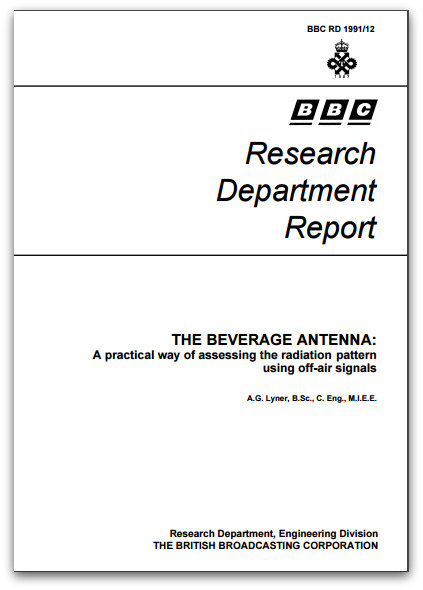Many thanks to SWLing Post contributor, Kris Partridge, who writes:
[R]esearch on DTH satellite TV service took me to a public website which is an archive going back to 1934. And boy, there is so much information there ..!
So what I pass to you for the Blog is this one as a start:
http://downloads.bbc.co.uk/rd/pubs/reports/1991-12.pdf
Knowing that many of your readers/contributors have made mention of using Beverage antennas I think this may make interesting reading. The report describes a method for accessing the performance of a Beverage, long wire, receiving antenna using off-air HF broadcast signals.
[…]It looks like the lower the better. And yes, there’s some heavy maths formula in there ..!
Wow–you’re right, Kris! This is very useful information. I’ll skip the maths bit and just follow the advice! Thank you for sharing.



Needless to say, a good Beverage Antenna requires more that may be found on “found” antennas. I tried more than a mile of disconnected railroad line wire for a receiving antenna and got zilch. The fast that the railroad transmission line was steel may have something to do with this. So does the grounding of the line. A knowledge of the theory means everything for beverage antennas. The choice of “beverage” taken along on the DXpedition remains vague.